Disclosure: This article contains affiliate links. We may earn a commission from purchases at no extra cost to you, which helps our travel content.
There are places in this world where color transcends the visual spectrum and becomes a spiritual experience. The Blue Mosque of Mazar-i-Sharif—or Shrine of Hazrat Ali as locals reverently call it—is precisely such a place. My journey to this azure masterpiece in northern Afghanistan wasn't merely about adding another destination to my portfolio. It was about understanding how a single structure could embody both the fragility and resilience of a nation's cultural identity through its mesmerizing palette of cobalt tiles and intricate geometric patterns. After years of documenting sacred spaces across the Himalayas, I felt drawn to this cerulean wonder rising from the Afghan plains like a mirage—a testament to human creativity that has endured through centuries of turmoil. What follows is not just a guide to photography, but an invitation to witness one of Central Asia's most breathtaking treasures through a respectful lens.
Preparing for a Photographic Pilgrimage
The journey to Mazar-i-Sharif requires more preparation than your typical photography expedition. This isn't about simply packing gear and boarding a plane; it's about entering a complex cultural landscape with both eyes open.
I spent three months researching before my trip, connecting with local fixers, understanding security situations, and obtaining necessary permits. While Afghanistan's tourism infrastructure is rebuilding, traveling here demands patience, flexibility, and cultural sensitivity that goes beyond what most destinations require.
For documentation, you'll need a valid passport with at least six months validity, a visa (which I obtained through the Afghan embassy in Sydney), and multiple passport photos. Keep digital copies of everything on your phone and in cloud storage.
Equipment-wise, I traveled deliberately light. My trusty mirrorless camera with its excellent dynamic range was perfect for capturing both the bright exteriors and shadowy interiors of the mosque. I primarily used a 24-70mm lens for versatility, though I occasionally wished for something wider to capture the mosque's full grandeur.
Perhaps most importantly, I carried a small polarizing filter which proved invaluable for managing reflections off the glazed tiles and deepening the already magnificent blues. The difference with and without this filter was striking—what appeared merely blue became an almost transcendent cobalt with the right polarization.
Power is inconsistent in Mazar-i-Sharif, so I packed three extra camera batteries and a solar charger. Cash is king here; I brought US dollars in small denominations and exchanged them gradually as needed.
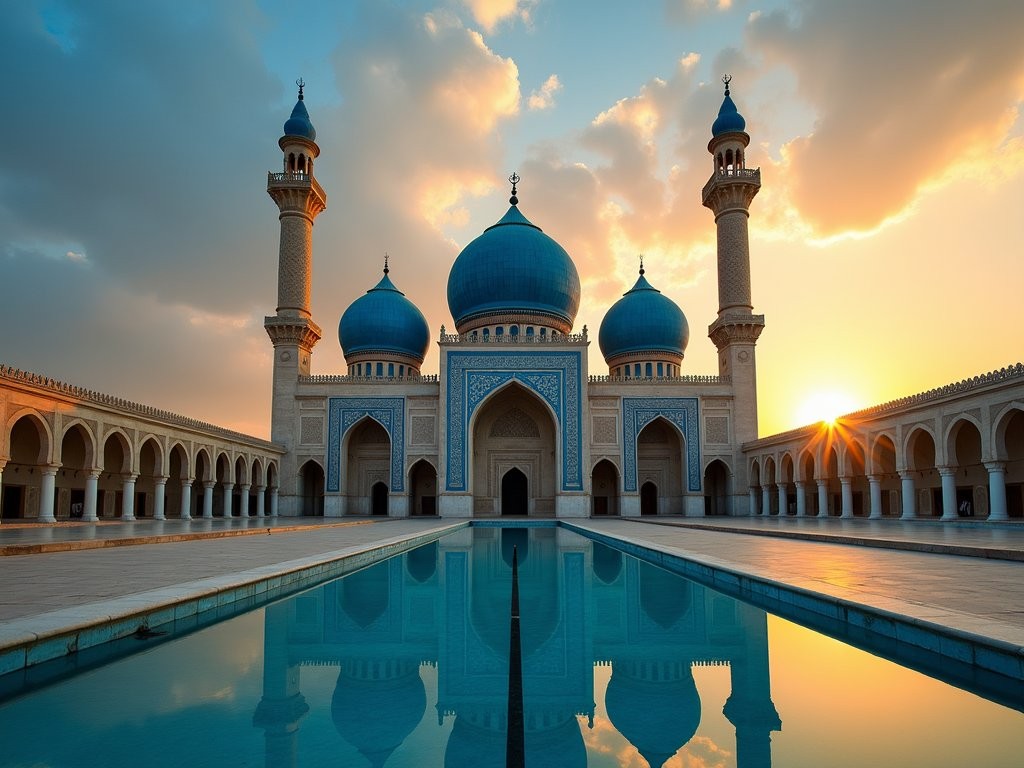
💡 Pro Tips
- Hire a local guide who understands both the cultural significance of sites and photographers' needs
- Bring a lightweight tripod that won't attract attention but can stabilize long exposures
- Pack lens cleaning supplies—dust is omnipresent and can ruin your blue mosque shots
The Dance of Light: Timing Your Blue Mosque Photography
If there's one lesson my years of photographing sacred sites across the Himalayas has taught me, it's that light is everything—and nowhere is this more true than at the Blue Mosque.
The mosque's famous blue tiles transform dramatically throughout the day, shifting from a soft, dreamy azure at dawn to an electric cobalt under the midday sun, before mellowing into a gentle sapphire as dusk approaches. Each phase offers distinct photographic opportunities that reveal different aspects of this architectural marvel.
Dawn provides what I consider the most magical conditions. Arriving at the mosque complex by 5:30 AM during my spring visit, I witnessed the first light breaking across the eastern sky, gradually illuminating the domes with a golden glow that created an almost otherworldly contrast against the deep blue tiles. The courtyards were nearly empty save for a few early worshippers, allowing for clean compositions without crowds.
The hour after sunrise offers what photographers call the 'golden hour'—soft, directional light that reveals the intricate textures of the tilework without harsh shadows. This is when I captured most of my detail shots of the geometric patterns that adorn every surface.
Midday presents challenges with harsh overhead light, but offers its own opportunities—this is when the blues appear at their most saturated and vibrant. I used this time to photograph interior spaces where filtered light created fascinating patterns on the floors and walls.
Late afternoon brings another golden hour, with warm light striking the western facades. As the call to prayer echoes across the complex around sunset, the atmosphere becomes charged with spiritual energy—a perfect time for environmental portraits and capturing the mosque as a living, breathing spiritual center rather than merely an architectural subject.
Night photography presents a final opportunity, with the mosque often illuminated by subtle lighting that accentuates its architectural features against the dark sky. For these shots, my travel tripod proved essential, allowing for the long exposures needed while remaining compact enough for my journey through Afghanistan.
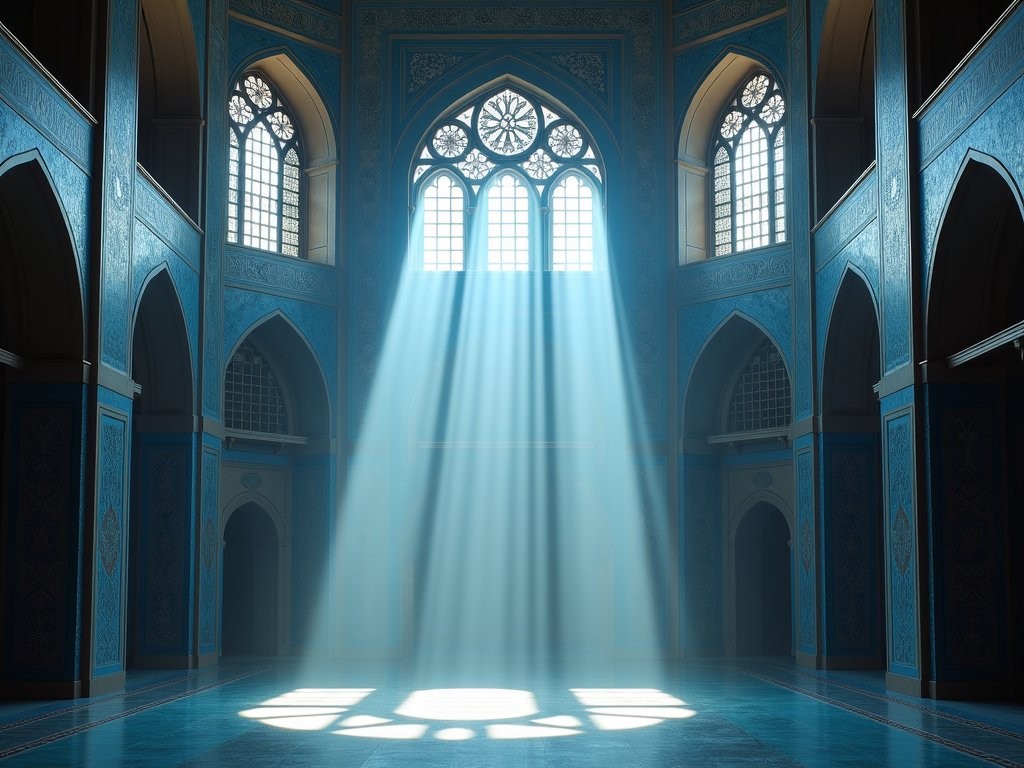
💡 Pro Tips
- Arrive at least 30 minutes before sunrise to set up your equipment and find your composition
- Midday blues are most vibrant but challenging to expose properly—bracket your shots
- During golden hour, look for where light streams through archways creating natural spotlights
Compositional Techniques for Sacred Architecture
The Blue Mosque presents a fascinating compositional challenge: how does one capture both its overwhelming grandeur and its minute details in a way that conveys its spiritual significance?
During my week in Mazar-i-Sharif, I developed a methodical approach, working from macro to micro. I began with establishing shots that showed the mosque in its entirety, using the surrounding plaza and reflecting pools to provide context. For these wider compositions, I found early morning optimal, when fewer visitors were present and the light remained soft enough to balance exposure between the bright sky and the mosque's facades.
The mosque's perfect symmetry begs for centered compositions, but I discovered that slightly offsetting my position—moving just a few meters left or right of center—often created more dynamic images that highlighted the three-dimensionality of the structure. The human eye naturally seeks balance, and these subtle asymmetrical compositions created a pleasing tension that drew viewers deeper into the image.
As I moved closer, I focused on the intermediate elements: the grand entranceways, the succession of arches, the relationship between domes and minarets. Here, I often employed the technique of layering, using foreground elements like archways to frame more distant features, creating depth in what could otherwise become flat, postcard-like images.
The most rewarding compositions came from intimate detail work. The Blue Mosque's surfaces are a masterclass in geometric precision and mathematical harmony. I spent hours with my macro lens documenting individual tiles, the subtle color variations within seemingly uniform blue sections, and the places where different geometric patterns intersect.
For this detail work, I found myself returning to the same locations at different times of day, as the changing light revealed different aspects of the craftsmanship. Morning light skimming across the surfaces highlighted texture, while midday light brought out the deepest blues.
Perhaps most importantly, I learned to incorporate human elements. Sacred spaces exist for people, and the most compelling images of the Blue Mosque were those that captured the relationship between the architecture and those who came to worship or marvel. A solitary figure in prayer, silhouetted against the vast blue walls, conveyed scale and purpose in a way no empty architectural shot could achieve.
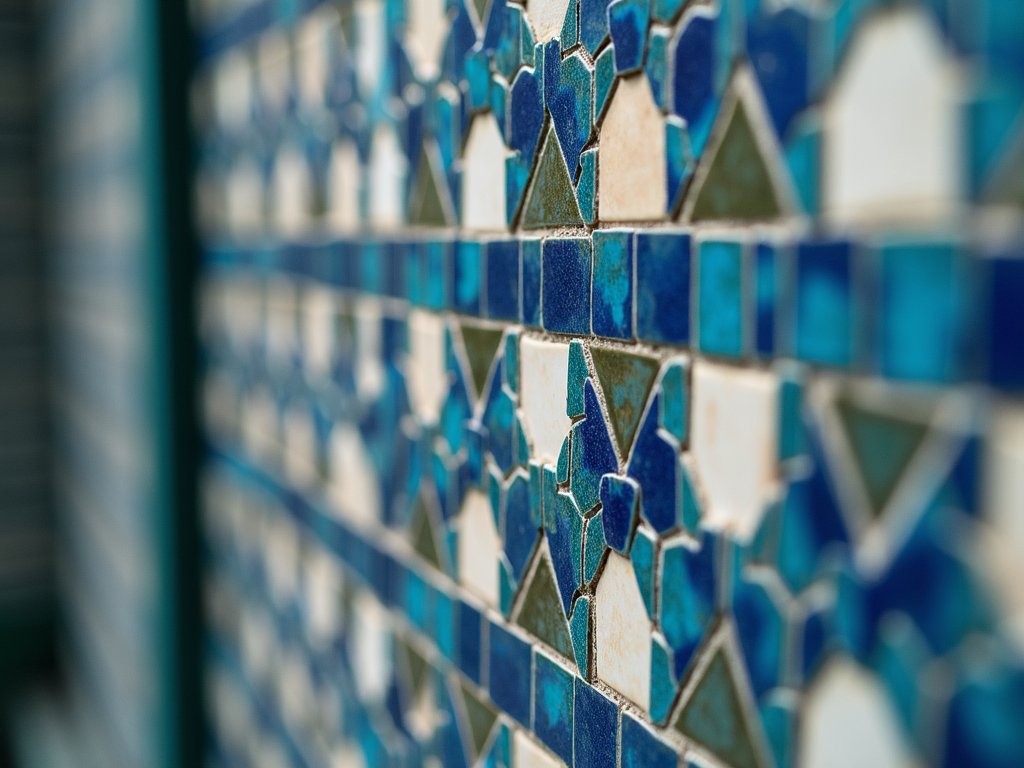
💡 Pro Tips
- Look for natural frames within the architecture to create compositions with depth
- Include human elements to convey both scale and the spiritual purpose of the mosque
- Experiment with reflections in the courtyard pools for symmetrical compositions
Cultural Sensitivity in Sacred Photography
Photography in Afghanistan—particularly at religious sites—requires a level of cultural awareness that goes far beyond technical skill. My background documenting sacred spaces across the Himalayas prepared me somewhat, but the Blue Mosque demanded its own specific approach.
First and foremost: permission. Before raising my camera, I made connections with local religious authorities through my guide. I explained my project, my background as an artist documenting cultural heritage, and my commitment to respectful representation. This wasn't merely a formality—it was an essential step that transformed me from an outside observer to a welcomed guest.
Dress appropriately. I wore loose-fitting, modest clothing that covered my shoulders and knees. For men, long pants are essential; for women, a headscarf and full coverage is required. I always kept a light scarf in my camera bag for unexpected sacred site visits during my travels.
Timing is crucial. I avoided photographing during prayer times unless specifically invited to do so. These moments are for worship, not documentation. Instead, I used prayer times to observe, understand the flow of movement through the space, and plan compositions for later.
When photographing people, permission becomes even more critical. A simple gesture asking for consent before photographing anyone at close range shows respect. I found that my sketchbook often served as an icebreaker—drawing first, then photographing after establishing a connection.
Some areas of the mosque are restricted, particularly to non-Muslims. Rather than testing boundaries, I respected these limitations completely. The resulting photographs are more meaningful for what they don't show—respecting the privacy of certain sacred spaces acknowledges their special significance.
I also made it a practice to share my work. Each evening, I reviewed my day's photographs on my portable monitor and shared them with my guide and some of the mosque caretakers. Their feedback helped me understand which images resonated culturally and which might have missed the mark. This collaborative approach led to more authentic documentation and deeper connections with the community.
Finally, I committed to sharing any proceeds from my Blue Mosque photography with local cultural preservation efforts. Photography shouldn't be extractive—especially in regions that have experienced so much loss of cultural heritage.
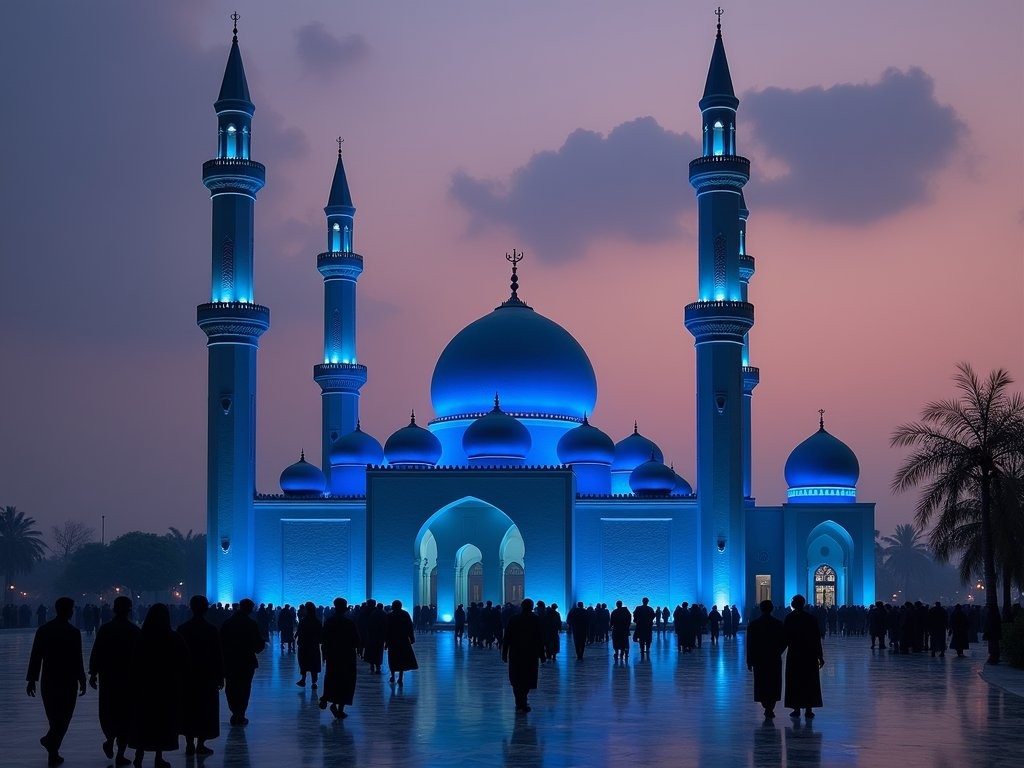
💡 Pro Tips
- Learn basic Dari phrases to ask permission before photographing people
- Remove shoes before entering interior spaces and carry shoe bags
- Avoid photographing during the five daily prayer times unless specifically invited
Beyond the Blue: Contextualizing Your Mosque Photography
While the Blue Mosque rightfully dominates any photographer's visit to Mazar-i-Sharif, I discovered that the most compelling visual story emerged when I expanded my focus to include the city and landscape surrounding this azure masterpiece.
Mazar-i-Sharif itself provides rich contextual imagery. The bustling bazaars that surround the mosque complex offer a vibrant counterpoint to the serene blue domes. Here, I captured the everyday life that unfolds in the shadow of the sacred—merchants selling everything from handwoven carpets to fresh pomegranates, the colors of their wares creating a different but equally vibrant palette.
I spent one full day photographing just hands—the weathered hands of carpet weavers, the henna-decorated hands of women shopping for fabric, the small hands of children flying kites in the plaza. These images, when juxtaposed with the architectural perfection of the mosque, tell a more complete story of place and people.
The landscape beyond the city offers another layer of context. I hired a driver for a day trip into the surrounding countryside, where the stark, khaki-colored hills create a natural canvas that makes the mosque's blue even more striking in memory. From certain vantage points in these hills, you can capture the mosque as a blue jewel set within the earthen city—a composition that speaks to both its uniqueness and its belonging.
Timing these contextual shots with the changing light throughout the day allows for a complete narrative arc. My approach was to document the mosque at dawn, the surrounding markets as they came to life mid-morning, the countryside in the clear light of afternoon, and then return to the mosque for dusk prayers and evening illumination.
For this varied shooting, my versatile zoom lens proved invaluable, allowing me to shift from environmental contexts to intimate details without constantly changing lenses in dusty conditions.
These contextual images serve another important purpose—they help viewers understand that Afghanistan is not defined solely by the conflict narratives that have dominated Western media. By showing the Blue Mosque within its living cultural context, we present a more complete picture of a place where extraordinary beauty and ordinary life coexist, where cultural heritage remains vibrantly relevant rather than relegated to history.
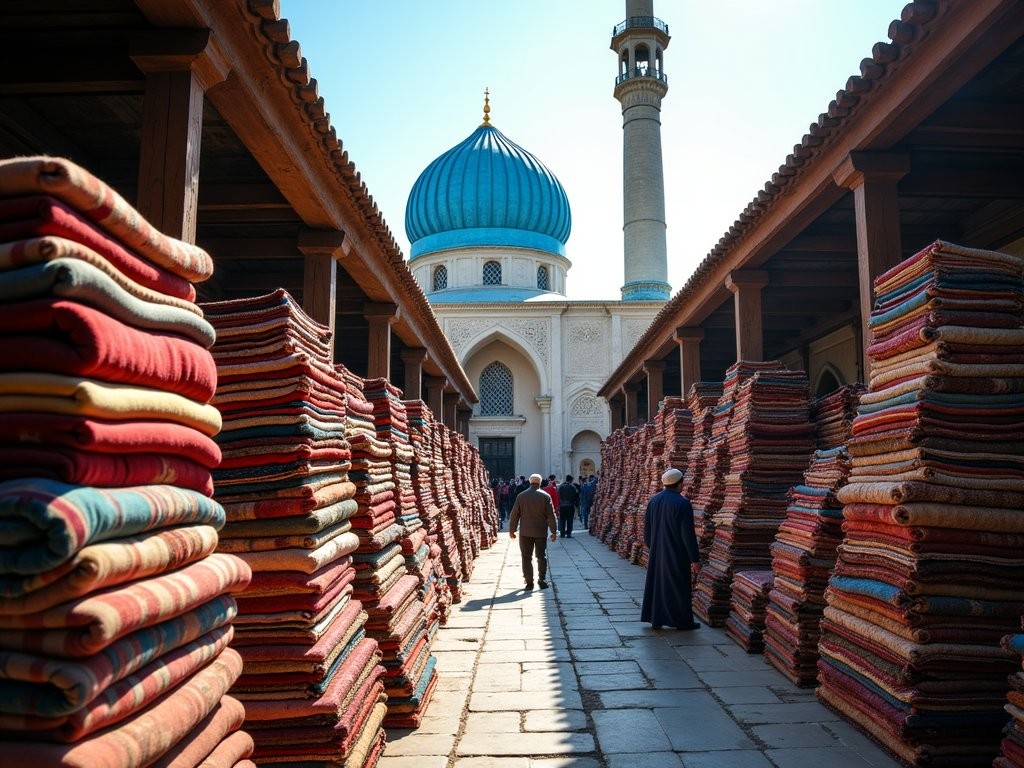
💡 Pro Tips
- Visit the nearby bazaars in the hours after morning prayer when the light is still good and the markets are active
- Arrange a sunrise trip to the surrounding hills for a perspective that shows the mosque in its landscape context
- Document the transition from day to night around the mosque complex to show how its role in community life changes
Final Thoughts
As I packed away my equipment on my final evening in Mazar-i-Sharif, watching the last light fade from the Blue Mosque's domes, I reflected on how photographing this place had changed me. The blues that had first captured my attention now seemed to contain multitudes—stories of faith, resilience, mathematical precision, and cultural pride. My camera had been not just a tool for documentation but a bridge to understanding.
Photographing sacred spaces is never just about technique or composition. It's about approaching with reverence, listening more than directing, and recognizing that some aspects of a place may remain beautifully unphotographable. If you journey to this azure wonder, come with open eyes but also an open heart. The Blue Mosque doesn't need your camera to be magnificent—but your images, created with respect and context, can help preserve its story for generations who may never see its blues in person. Let your lens be a witness, not merely an observer.
✨ Key Takeaways
- The best photographs of the Blue Mosque balance architectural grandeur with human connection
- Cultural sensitivity opens doors to more authentic and meaningful photographic opportunities
- The changing light throughout the day transforms the mosque's blue tiles, offering distinct moods and compositions
- Contextualizing the mosque within its urban and landscape settings tells a more complete visual story
📋 Practical Information
Best Time to Visit
March-May (spring) when temperatures are moderate and the festival of Nowruz may coincide
Budget Estimate
$100-150 per day including modest accommodation, local guide, and meals
Recommended Duration
Minimum 3 days, ideally 5-7 days to capture all lighting conditions
Difficulty Level
Advanced - Requires Cultural Sensitivity, Security Awareness, And Photography Experience
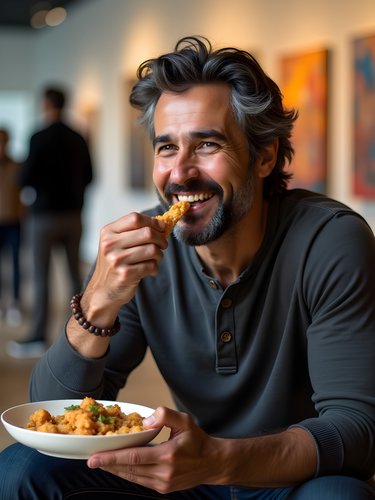
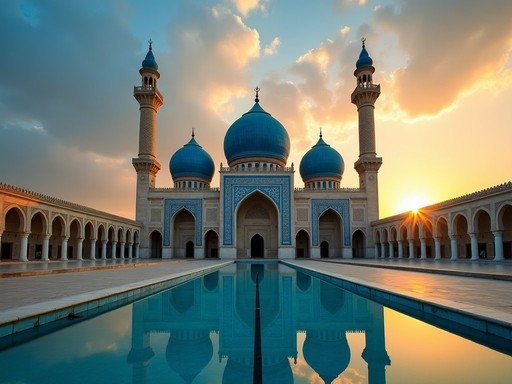
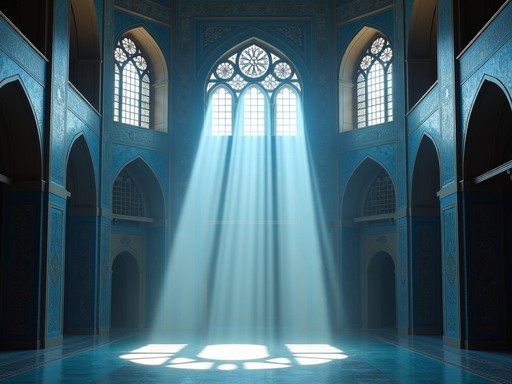













Comments
wanderlustmate
These photos are incredible! The colors don't even look real. Great tips about the best angles too.
Fatima Sims
Amit, your guide brought back so many memories! I visited the Blue Mosque three years ago during my solo adventure through Central Asia. The way you captured the interplay of light on those azure tiles is exactly what makes this place so magical. One thing I'd add for photographers: the mosque looks completely different across seasons. I was there in winter when a light dusting of snow created this ethereal contrast against the blue tiles. For women travelers, I found wearing a colorful but modest headscarf actually helped me blend in while also adding a beautiful element to my own photos when my husband took pictures of me there. The local women have such a wonderful sense of style and color! Did you make it to the nearby markets? The textile sellers have fabrics that echo the same blues from the mosque - I brought home some that now remind me of this special place every day.
springfan
Did you need special permission to photograph inside? I've heard some religious sites have restrictions.
Amit Sanchez
Good question! Photography is generally allowed in the courtyard and exterior areas, but there are restrictions in certain interior spaces. Always look for signs or ask the staff if unsure. Being respectful goes a long way!
Hunter Thompson
Mate, this guide is absolutely brilliant! I backpacked through Afghanistan last year and Mazar-i-Sharif was definitely the highlight. The Blue Mosque is even more spectacular in person than photos suggest. One tip I'd add - I found my wide angle lens essential for capturing those intricate ceiling details and the full scale of the architecture. Also worth mentioning that the locals were incredibly welcoming when I asked permission before taking photos of people. Did you try the street food near the mosque? Those kebabs changed my life!
wanderlustmate
How was your experience with safety there? Been wanting to visit but a bit nervous about current conditions.
Hunter Thompson
Completely understand the concern. I went with a local guide which I'd definitely recommend. Situation varies by region, so do thorough research before going and check your government's travel advisories. Mazar-i-Sharif was relatively stable when I visited, but things can change quickly.
winterlegend851
Been there in 2022. Breathtaking place. Your photos capture it perfectly.
coolmate
WOW! I've never even considered Afghanistan as a travel destination but these photos are STUNNING! The Blue Mosque looks absolutely magical. Your section on cultural sensitivity was super helpful too - it's so important to be respectful when photographing sacred places. Adding this to my dream destinations list now!
winterpro
Amazing photos! What time of day did you find best for capturing those incredible blues? I'm planning a trip there next spring and want to make the most of it.
Amit Sanchez
Thanks! The hour before sunset was magical - the tiles catch this golden-blue glow that's impossible to describe. Early morning (right after opening) is also great for fewer crowds. Just be mindful of prayer times!
winterpro
Perfect, thanks for the tips! Can't wait to try capturing that golden-blue light.
Nicole Russell
This guide is exactly what I needed before my trip to Afghanistan next month! The cultural sensitivity section is particularly helpful - I've made mistakes before at religious sites and regretted it. Question: how did you handle the changing light conditions throughout the day? I'm bringing my variable ND filter but wondering if I should pack anything else specific for those blue domes. Also, did you find it necessary to hire a local guide, or were you able to navigate photography etiquette on your own? Thanks for sharing your expertise!
coolace
Not the author but I'd definitely recommend a local guide. Mine helped negotiate access to some areas that would have been difficult otherwise, plus provided cultural context that improved my photos.
Nicole Russell
Thanks for the tip! Will definitely look into hiring someone then.
wildguy
Those blue tiles are UNREAL! Your photos capture the colors perfectly. Did you use any specific filter?
Nicole Russell
Not the author, but I've shot there too! The blues are actually that vibrant in real life - if anything, cameras struggle to capture how intense they really are. I found shooting in RAW and slightly underexposing helped preserve the tile details.
coolace
Amazing guide, Amit! I visited the Blue Mosque last year and wish I'd had these tips then. The light at sunset was magical, but I struggled with the crowds. Your suggestion about visiting during early morning prayer times is spot on - that's when I got my best shots. Did you find any issues with using a tripod inside the courtyard? Security was a bit strict when I was there.
wildguy
I was there three months ago and used a small Gorillapod without issues. The key is being respectful and asking permission first. Full-size tripods definitely got more scrutiny though.
coolace
Good to know! I'll try that approach next time.
Venture X
Premium card with 2X miles, $300 travel credit, Priority Pass